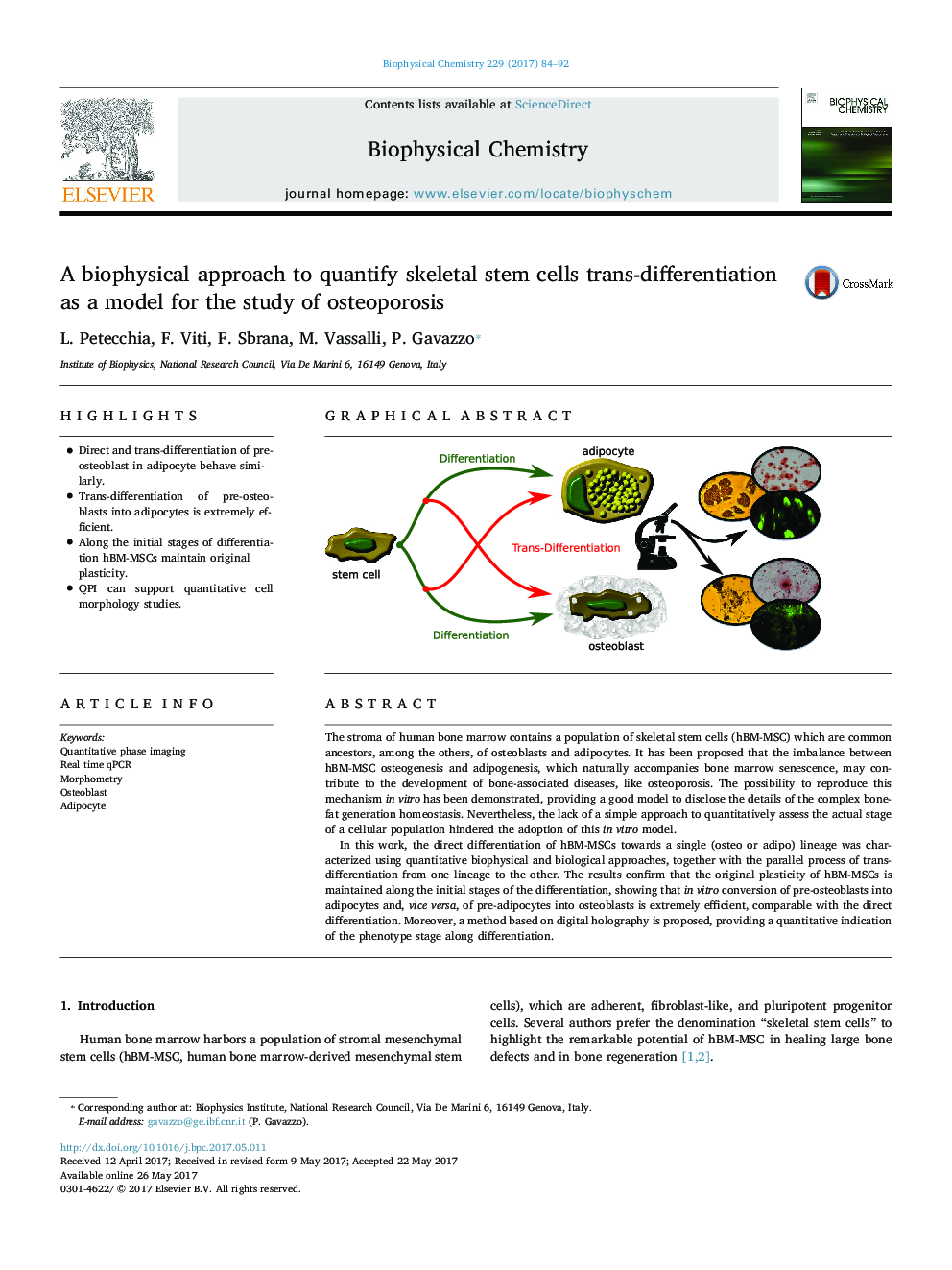| Article ID | Journal | Published Year | Pages | File Type |
|---|---|---|---|---|
| 5370612 | Biophysical Chemistry | 2017 | 9 Pages |
â¢Direct and trans-differentiation of pre-osteoblast in adipocyte behave similarly.â¢Trans-differentiation of pre-osteoblasts into adipocytes is extremely efficient.â¢Along the initial stages of differentiation hBM-MSCs maintain original plasticity.â¢QPI can support quantitative cell morphology studies.
The stroma of human bone marrow contains a population of skeletal stem cells (hBM-MSC) which are common ancestors, among the others, of osteoblasts and adipocytes. It has been proposed that the imbalance between hBM-MSC osteogenesis and adipogenesis, which naturally accompanies bone marrow senescence, may contribute to the development of bone-associated diseases, like osteoporosis. The possibility to reproduce this mechanism in vitro has been demonstrated, providing a good model to disclose the details of the complex bone-fat generation homeostasis. Nevertheless, the lack of a simple approach to quantitatively assess the actual stage of a cellular population hindered the adoption of this in vitro model.In this work, the direct differentiation of hBM-MSCs towards a single (osteo or adipo) lineage was characterized using quantitative biophysical and biological approaches, together with the parallel process of trans-differentiation from one lineage to the other. The results confirm that the original plasticity of hBM-MSCs is maintained along the initial stages of the differentiation, showing that in vitro conversion of pre-osteoblasts into adipocytes and, vice versa, of pre-adipocytes into osteoblasts is extremely efficient, comparable with the direct differentiation. Moreover, a method based on digital holography is proposed, providing a quantitative indication of the phenotype stage along differentiation.
Graphical abstractDownload high-res image (288KB)Download full-size image
